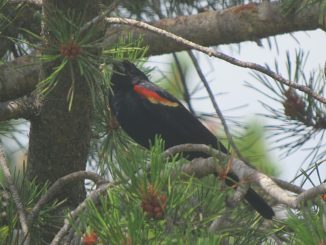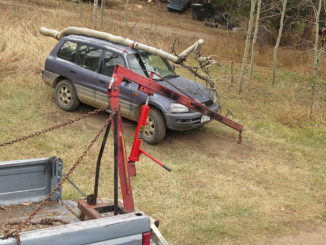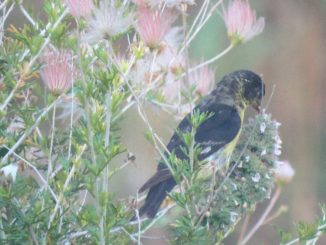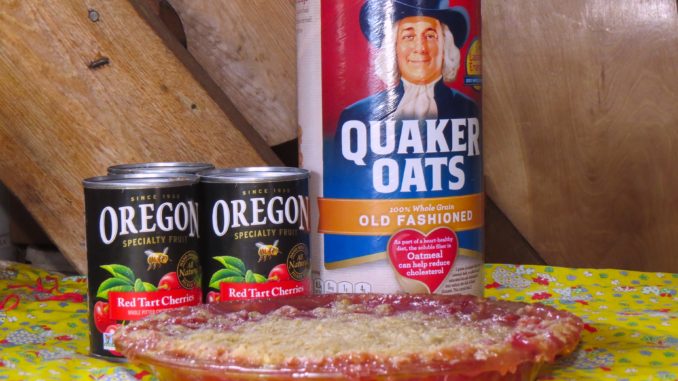
Sally Roth
[email protected]
“She can bake a cherry pie, in the twinkling of an eye”—that was my mother, 60 years ago. She’d take the sour cherries I’d picked from our own tree (Pennsylvania, not Colorado), pit them like lightning with her thumb, stir in some sugar and cornstarch, and dump them into what would bake into a perfect flaky crust bubbling with fragrant pink juice.
Me? Well, being a little kid, I watched the making, helped crimp the edges, and gladly gobbled up the pie.
By the time I was baking my own pies, cans of deep red cherry pie filling (thank you, Red Dye #40!) made it simple: Roll out the crust, open the big can of filling and scoop it in, lay out a lattice top, and presto!
When it came to making a pie to pose for a photo, though, I was determined to make it from scratch, just like my mom used to do.
First obstacle: No cherry tree. But I found canned sour cherries—from Oregon (sorry, old NOCO orchards!)—with no dye or sugar or thickener added.
Then I looked up recipes online. What? I had to make a syrup? Um, no: this was supposed to be quick. Besides, I didn’t have a clean 3-quart saucepan.
Uh-oh—I was nearly out of flour. Maybe a quarter-cup in the bottom of the pretty bluebird-decorated cloth bag. Barely enough for a crumb topping, if I stretched it with oatmeal; not nearly enough for a double crust.
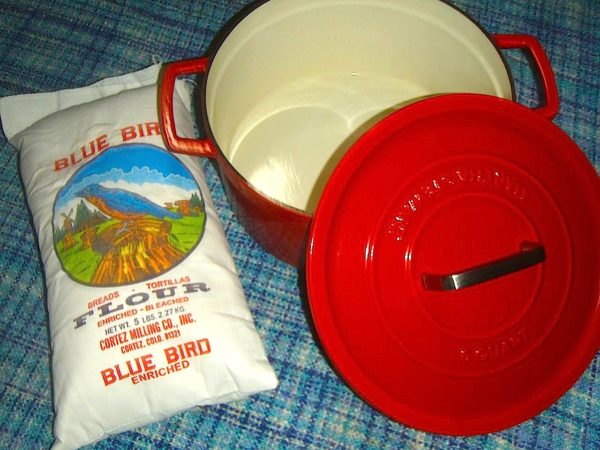
My flour sack was not nearly so plump as in this pic when I pulled it out to make pie crust. A cherry crisp, it would have to be.
Fine. I’d wing it. The results? Well, it sure wouldn’t have won a ribbon at the Cherry Festival, but a generous scoop of vanilla ice cream goes a long way toward hiding flaws, and the cherries are just as good as I remembered.
Maybe I should put a ‘Montmorency’ pie cherry tree at the top of the list (same variety as in the old orchards, and still reliable here), instead of another sack of flour. Seems I’m much better at covering up my mistakes in the garden than I am at disguising a cooking disaster.
Too much happening!
“Slow down, doggone it!” I always gripe when spring finally arrives, with summer hot on its heels. Wildflowers and garden flowers bloom too fast for me to keep up, even with a daily walkaround, and summer birds and bugs arrive in a rush.
A few high points this month:
Wild orchids. Take a drive into the mountains to spot spectacular calypso orchids (dancing fairies, is how I think of them) in early June, and much smaller flowered coralroot (glad I just got new bifocals!) and green or white bog orchids in June, July, and August. All live at about 8,000’ and higher.
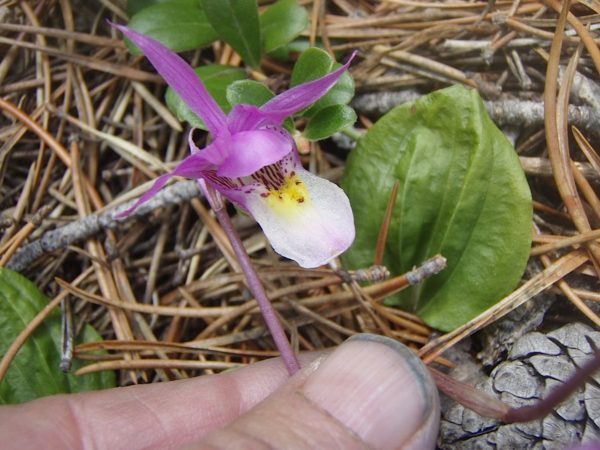
Ignore the gardening fingernails, and look at that spectacular wild orchid! These calypso orchids are easy to spot from mountain roadsides this month.
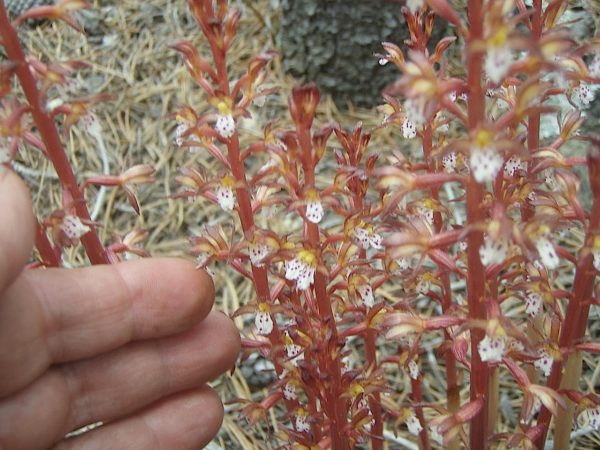
Coralroot orchids grow in colonies—watch for upright reddish stems from the road—but you’ll have to look close to appreciate the tiny orchid blossoms.
The Yellow Rose of Texas. Those deep yellow roses that grow like weeds in old gardens and cemeteries, and in dooryards from Kansas to Colorado? That’s ‘Harison’s Yellow’, brought by pioneers as cuttings stuck into raw potatoes to keep them moist. Famous as “the Yellow Rose of Texas,” it was also beloved because it stood up to harsh Colorado (and Wyoming and Montana) conditions. Hard to find in nurseries these days—but do ask for it! Demand may bring it back. In the meantime, you can buy it from High Country Gardens (http://highcountryroses.com/harison-s-yellow) and other mail-order sources—or ask a friendly gardener whether you can dig a start.
Wildflowers. The oohing and ahhing continues, but early-blooming pasqueflowers, ball cactus and sand lilies give way to blue-and-white Rocky Mountain columbine, purple and blue penstemons (yes, I’m a blue-flower nut), prickly pear, lupines, and hundreds of other beauties. Visit Lory State Park near Bellvue this month to see orange globe mallow and other field flowers. The peak is over soon in lower lands; in the mountains, you can enjoy wildflowers almost until the snow starts again…which could be in August. (Did I mention I’m a complainer?)
Birds, birds, birds! See if you can spot the rainbow—partly red western tanagers, orange Bullock’s orioles and black-headed grosbeaks, yellow goldfinches and yellow warblers, green vireos and kinglets, blue mountain and western bluebirds and lazuli buntings, purple swallows. Can we call these migrants “our” birds, when all they do is nest here, while spending fall through spring in Central and South America? You bet!
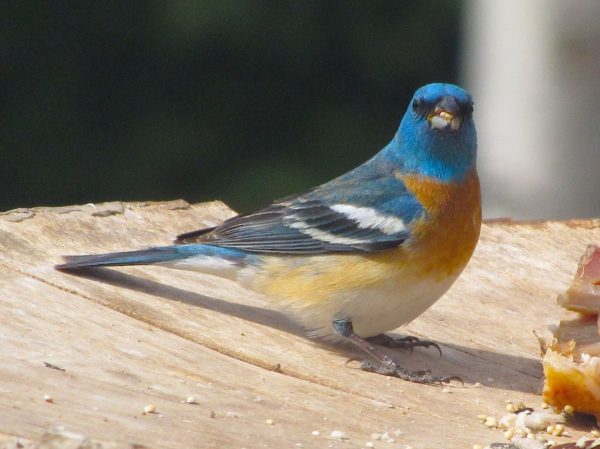
White proso millet may bring a vivid lazuli bunting to the feeder.
Support Northern Colorado Journalism
Show your support for North Forty News by helping us produce more content. It's a kind and simple gesture that will help us continue to bring more content to you.
BONUS - Donors get a link in their receipt to sign up for our once-per-week instant text messaging alert. Get your e-copy of North Forty News the moment it is released!
Click to Donate

